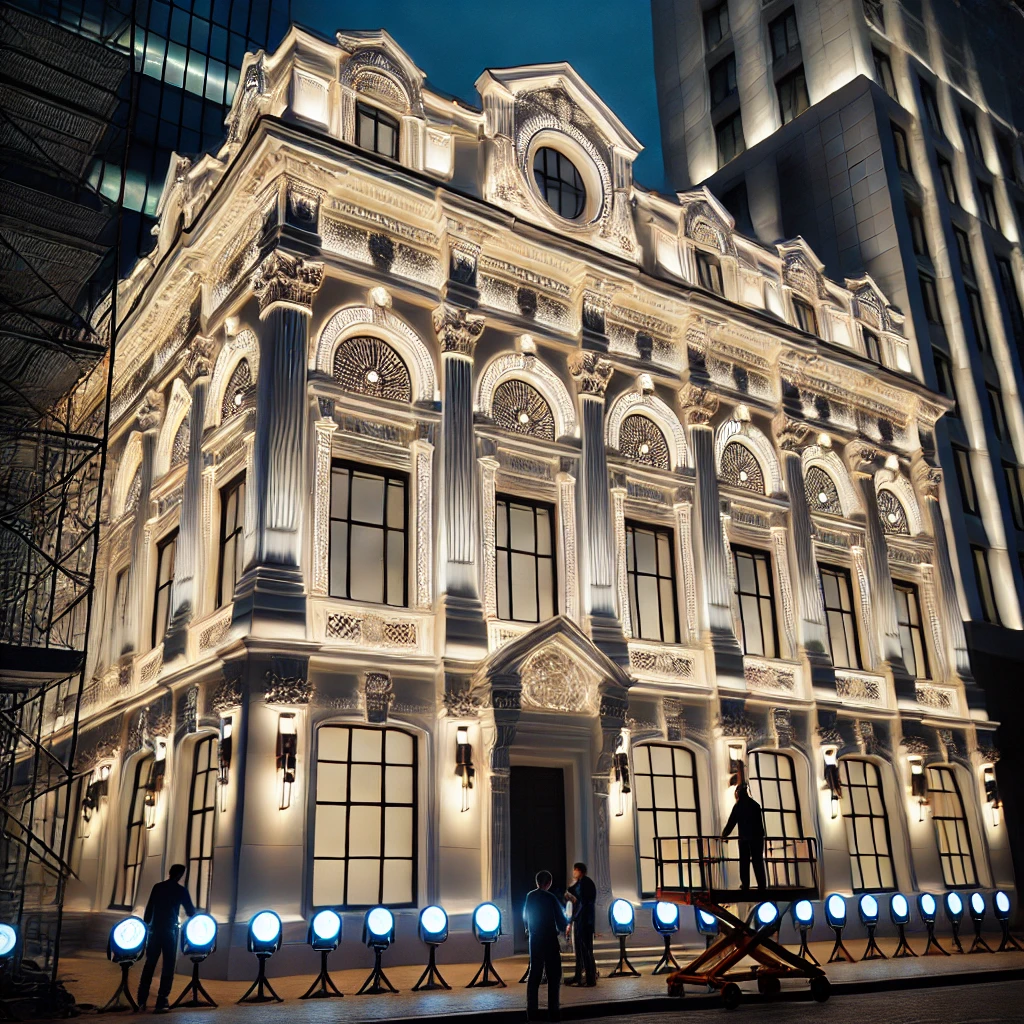Installation of architectural lighting on high-rise buildings: key aspects

Architectural lighting of high-rise buildings is not just a decorative element, but an important means of emphasizing the aesthetics of the building, creating a unique image of the city and improving safety at night. Thanks to properly designed lighting, it is possible to emphasize the details of the facade, highlight the structural features of the building or even influence the perception of its height and shape.
The installation of lighting systems on high-rise buildings requires a professional approach, as technical, aesthetic and safety aspects must be taken into account. Working at high altitudes, selection of appropriate equipment and compliance with all regulations are prerequisites for a high-quality and durable result.
The main stages of installation of backlighting
Installation of architectural lighting involves several key stages, each of which is important for the final result. Before proceeding to the installation of lighting, it is necessary to conduct careful planning and prepare for the work.
- Development of the concept of lighting. At this stage, the style and intensity of illumination is determined, the color scheme is selected, the location of fixtures is planned. It is important to take into account both aesthetic and energy-saving characteristics of lighting fixtures.
- Selection of equipment. Luminaires should be resistant to weather conditions, have a high degree of protection against dust and moisture. It is also worth choosing energy-efficient LED systems, which provide durability and minimal power consumption. It is important to consider the spectrum of light flux, brightness level and light temperature, as they affect the overall perception of the building. It is also important to pay attention to light control systems – modern technology allows automatic adjustment of light levels depending on the time of day and user needs, which helps to save resources.
- Installation of the electrical network. High-altitude work on cabling and installation of control units requires compliance with safety regulations. All electrical connections must be insulated and protected from external factors. It is important to use certified cables with increased protection against moisture, ultraviolet light and mechanical damage. In addition, it is important to consider the optimal wiring layout to avoid unnecessary energy consumption and to ensure an even load on the system. Installation of control units should be carried out in convenient locations for maintenance, which will allow you to quickly perform diagnostics and correct possible malfunctions.
- Fixing of luminaires. This is the most responsible stage, because it is necessary to correctly install the luminaires, so that they were firmly fixed and had the necessary angle of illumination. It is important to use special fixtures that can withstand mechanical loads and unfavorable weather conditions. In addition, it is necessary to take into account the weight of the luminaires, even distribution of the load and the possibility of further maintenance.
- Setting and testing. After installation it is necessary to test the system operation, adjust the lighting modes, check the uniformity of light flow and adjust the angle of inclination of luminaires. It is also important to test the stability of lighting operation under different weather conditions and at different times of the day. This can be done using special software or a remote control that allows adjustments to be made without physical intervention.
What should be taken into account when installing?
In order for architectural lighting to work effectively and for a long time, it is necessary to pay attention to such aspects:
- Reliability of the mounting of luminaires, especially at high heights.
- Use of anti-corrosion materials for mounting.
- Selection of luminaires with optimal energy consumption.
- Compliance with electrical safety regulations when installing networks.
- Possibility of remote control of lighting.
Professional installation of backlighting not only creates an attractive view of the building at night, but also helps to save energy, improves safety and extends the life of lighting equipment. That is why it is worth entrusting this work to qualified specialists.
Interesting articles:
High-rise buildings and festivals: how they help organize large-scale events
Washing of facades and windows: how often should it be done and what methods to choose
